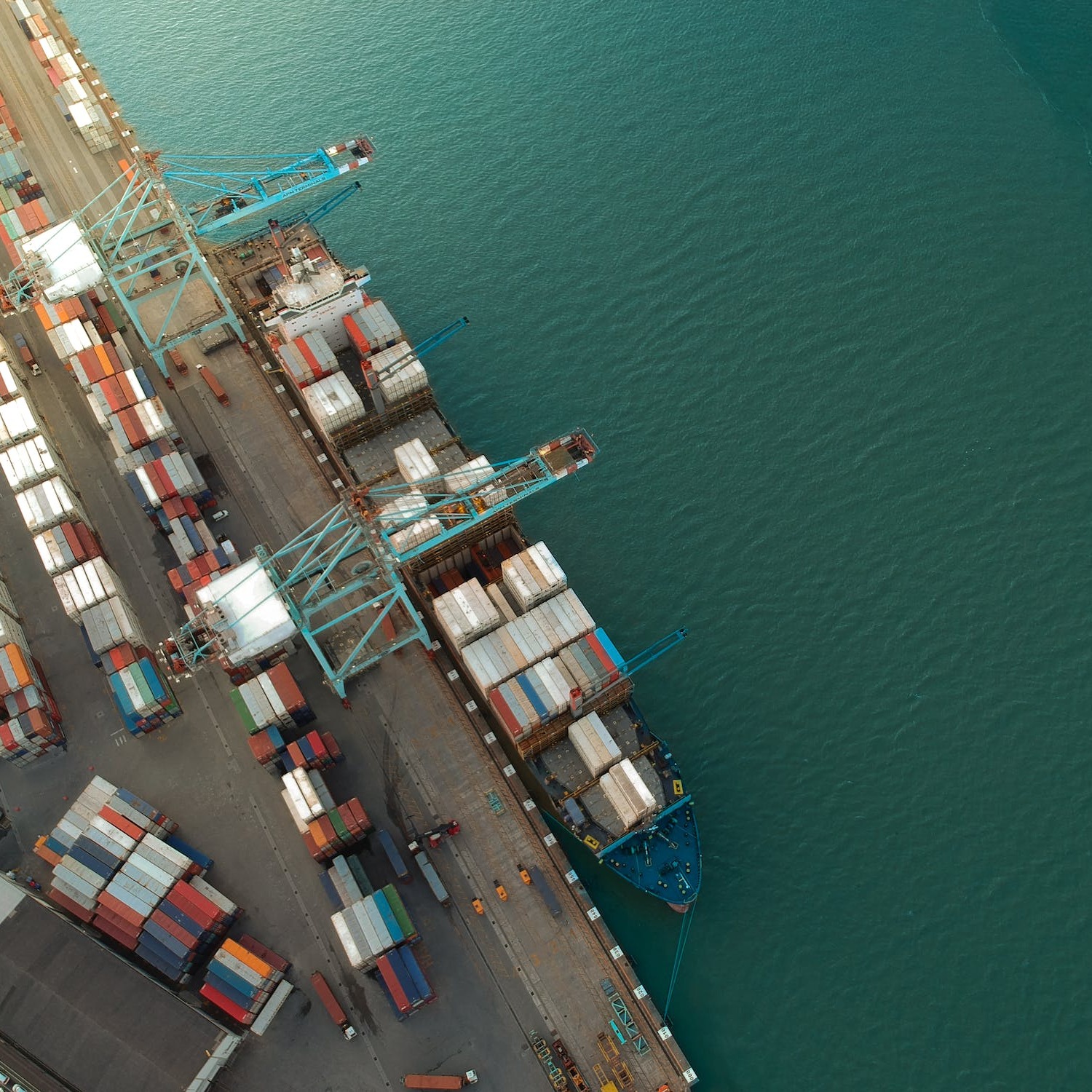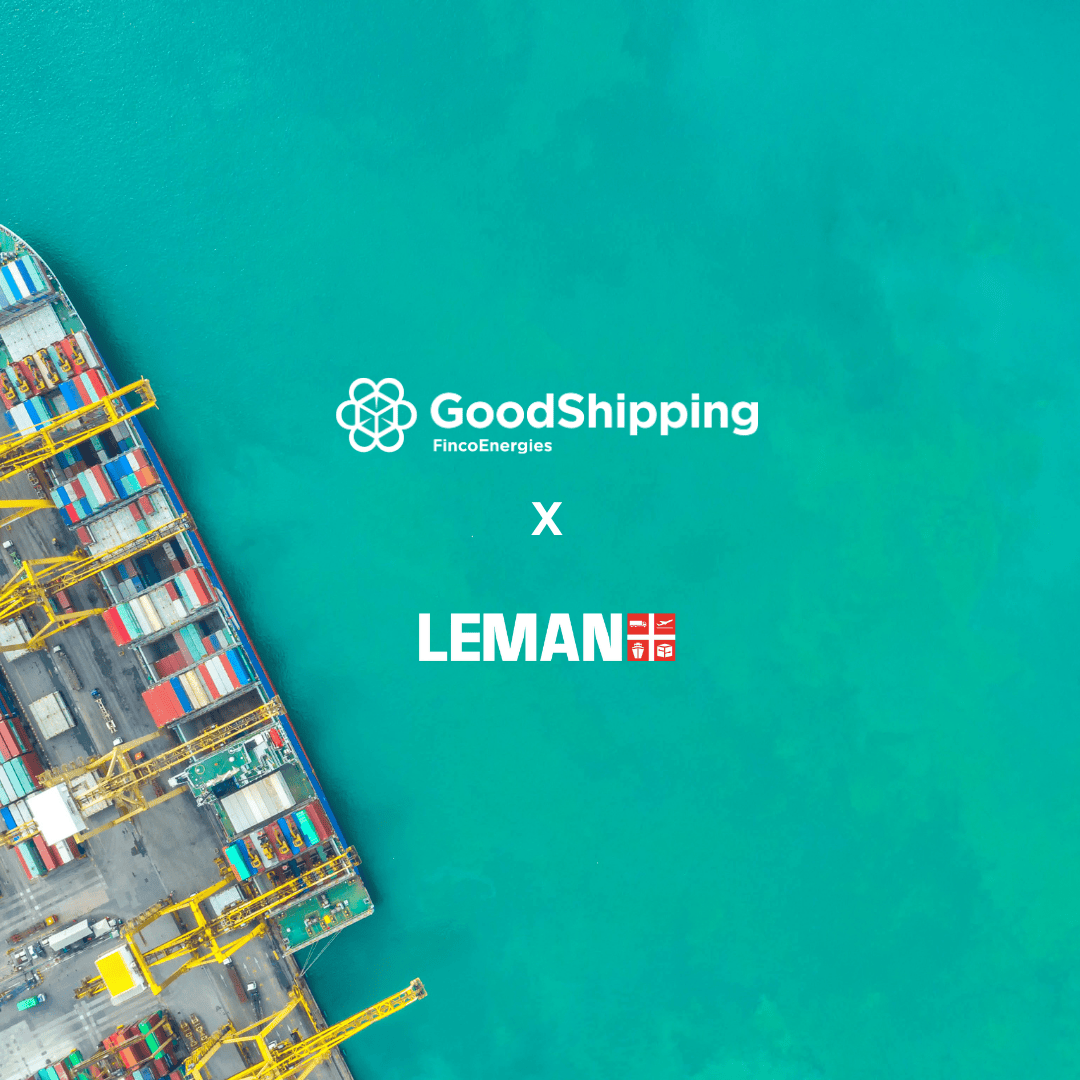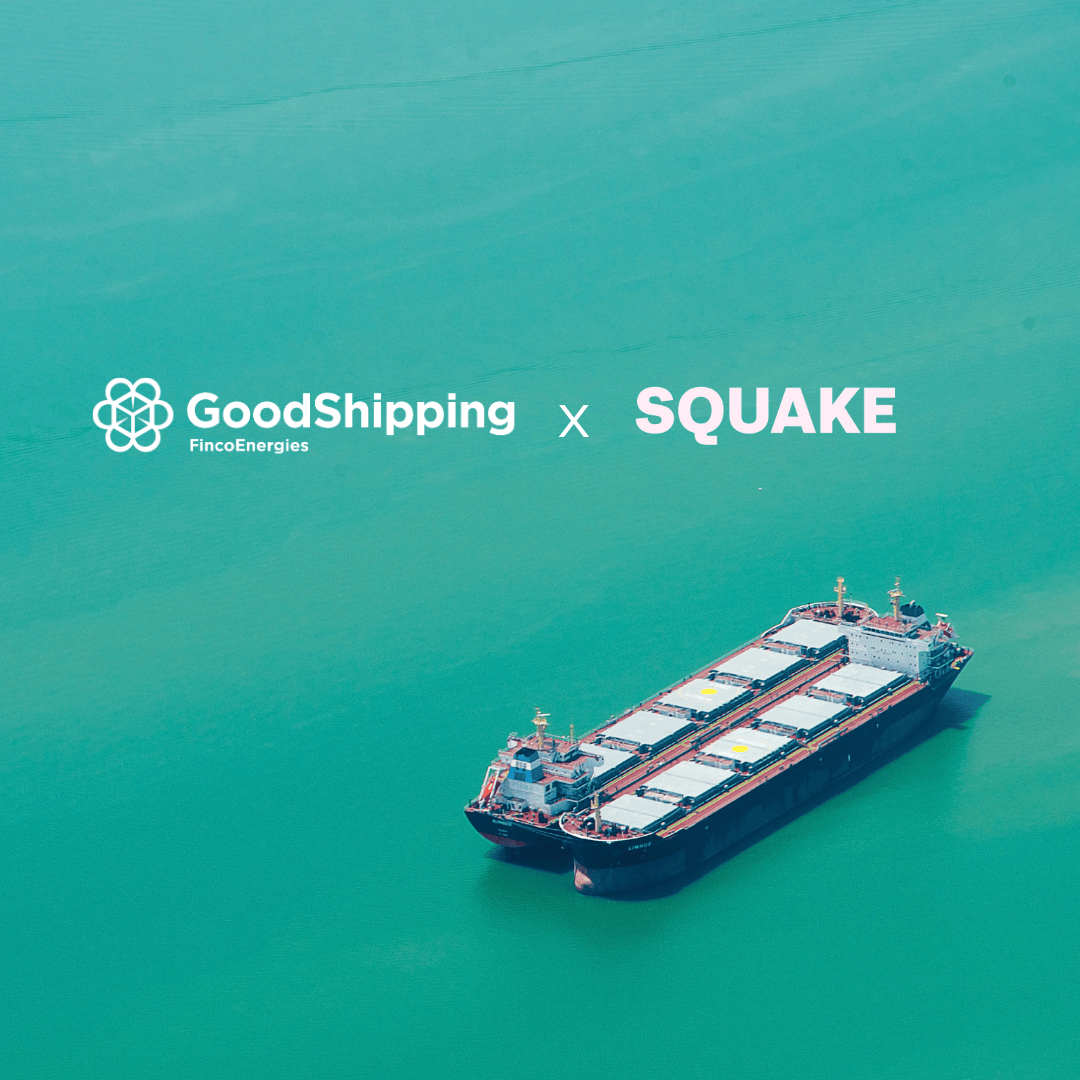What is Book and Claim? How can it help increase digital traceability in the shipping sector
.jpg)
%20(28).jpg)
Book and Claim is one of the four most common chain of custody models. It is a methodology for managing and verifying the use of sustainable resources, particularly in supply chains where physical tracking of the resource is challenging.
Maritime Greenhouse Gas (GHG) emissions, which account for 3% of the global total, have increased by 20% over the last decade. Without action, emissions could reach 130% of their 2008 levels by 2050.
The maritime shipping sector plays a crucial role in accelerating the transition to a low-carbon economy. However, the industry’s decarbonisation faces various challenges such as high costs, lack of transparency over decarbonisation activities, and difficulty to trace emission reductions across the supply chain. Nevertheless, by increasing transparency of your decarbonisation efforts, you contribute to the development and growth of the entire sustainable shipping industry.
In this blog article, you will learn the definition and the importance of digital traceability for shipping businesses and how the concepts of traceability and chain of custody are related. You will also discover how digital platforms with book and claim methodology can support shipping and logistics businesses to get control over their Scope 3 emissions. Let’s start with the basics.
What is digital traceability?
In the context of sustainability, digital traceability is a tool to assure and verify sustainability claims linked to goods and products throughout their lifecycle. This process ensures that sustainability claims are transparent and verifiable, helping businesses comply with regulations and build trust with stakeholders.
For example, for shipping businesses, digital traceability includes tools that allow for real-time tracking and verification of sustainable practices throughout the entire shipping process. This ensures transparency and compliance with environmental regulations, from cargo origin to delivery.
Digital traceability and chain of custody: how are the two concepts related?
Chain of custody refers to the chronological documentation or paper trail that records sequence of custody, control, transfer, analysis, and disposition of physical or digital evidence.
Digital traceability refers to the ability to track and trace the history, location, usage, and changes of digital data, assets, or processes through recorded identification.
While the two concepts have similarities, they serve different purposes and refer to different aspects of tracking and documenting the movement and handling of items.
Traceability is a broader concept that includes the tracking of items, while chain of custody is a specific aspect of traceability focused on the chronological documentation that allows tracking. For traceability to be effective, a strong chain of custody control is essential.
Relationship between traceability and chain of custody:
- Supportive roles: Chain of custody supports traceability by providing detailed and documented proof of each step in the product’s journey, enhancing the accuracy and reliability of traceability efforts.
- Enabling verification: Chain of custody is essential for verifying the claims made in traceability records, such as the sustainable sourcing or handling of materials.
- Compliance and standards: Both are critical for meeting regulatory requirements and industry standards, which may mandate specific levels of traceability and validated chain of custody to ensure safety, legality, and quality of products.
Chain of custody models are frameworks designed to ensure the traceability and accountability of a product throughout its entire supply chain. These models vary in how thoroughly they trace a product's origin and sustainability characteristics, and in their implementation complexity. ISO differentiates four core chain of custody models:
.png?width=2000&height=1414&name=GS_Onepager.pdf%20(11).png)
Each model offers different levels of control and traceability, chosen based on the desired detail, product, or industry needs. Effective chain of custody requires detailed documentation of each product transfer, including dates, times, locations, and involved parties, ensuring accountability throughout the process.
What is Book and Claim?
Book & Claim is one of the four most common chain of custody models. It is a methodology for managing and verifying the use of sustainable resources, particularly in supply chains where physical tracking of the resource is challenging. This method is especially suitable for fuels because it allows for the decoupling of physical fuel delivery from sustainability claims, enabling more efficient distribution and use of certified sustainable fuels without the need for extensive and costly physical segregation.
In the fall of 2021, GoodShipping, together with a group of multinational industry leaders, including: Smart Freight Centre (SFC), World Economic Forum, DPDHL, Maersk, Klaveness, Frito-Lay Trading CO., Renewable Energy Group, Shell and CH Robinson set out to create a universal framework to formally account for transportation emission reduction actions through a Book and Claim chain of custody system.
The figure below showcases Smart Freight Centre’s exemplification of the book and claim chain of custody model for liquid fuels. Conventional fuel is mixed with low emission fuel. The emissions profile of the low emission fuel is tracked separately from that of the conventional fuel. The proportion of conventional fuel in the distribution system is not accounted for separately from the proportion of low emission fuel in the distribution system. The organisation that claims the emissions profile of the low emission fuel may not physically receive any low emission fuel.
A book and claim chain of custody model
.png?width=2160&height=1215&name=Untitled%20design%20(33).png)
Source: Smart Freight Centre
On 21 June 2023, the Book and Claim framework, Voluntary Market Based Measures Framework for Logistics Emissions Accounting and Reporting, was published – representing a significant milestone for the industry by officially recognising Book and Claim for carbon insetting as the powerful tool that it is to decarbonise the transport sector.
How the GoodShipping Book and Claim methodology aligns with the Smart Freight Centre’s Book and Claim framework
In its definition of the Book and Claim framework, Smart Freight Centre (SFC) identifies two methods by which organisations can book or claim:
- Direct generation of a LETS (low emission transportation service) by a carrier conducting transport activity with a low emission transportation solution; or
- Indirect generation of a LETS by a carrier, shipper, or LSP (logistics service provider) that calculates an emissions footprint, based on the profile of a low emission solution, even though that solution may not have been applied by their fleet or by the carriers in their supply chain.
The GoodShipping Book and Claim methodology aligns with the Smart Freight Centre’s ‘indirect generation’ book and claim chain of custody model.
In indirect generation scenarios, a direct physical connection cannot be established between transport and LETS (low emission transportation service). In these cases, a carrier, cargo owner, or a freight forwarder computes an emissions footprint as though a low-emission solution were employed within their own operated fleet (for carriers) or by the carriers within their supply chain (for shippers and forwarders).
In GoodShipping’s approach to carbon insetting, the adoption of Book and Claim chain of custody model allows for flexibility in how and where biofuels replace fossil fuels, ensuring the overall reduction in atmospheric carbon is achieved.
This model enables GoodShipping to substitute fossil fuels at the most efficient times and places within the sector (through fuel switch), allowing shippers/logistics service providers to continue running their business as usual.
Indirect generation of a LETS using the profile of a fuel purchased through a book and claim chain of custody system
.png?width=1920&height=1080&name=Untitled%20design%20(34).png)
Source: Smart Freight Centre
How does GoodShipping’s Book and Claim process work?
Freight transportation providers, such as freight forwarders, or freight decarbonisation solution providers, like GoodShipping, allocate a low emission profile to organisations that contribute to the cost of emission abatement.
This allocation occurs even if the organisations' freight is not always transported using low emission solutions. Purchasers of freight transportation can contribute to the cost premium associated with low emission transportation services and, in return, report the greenhouse gas emission profile of these services.
This reporting is possible even if their freight was not physically transported using the low emission solution, allowing organisations to support and benefit from decarbonisation efforts without requiring direct use of low emission transportation for their specific shipments.
How Book and Claim framework can help shipping companies enhance sustainability and competitiveness
The Book and Claim framework, as defined by Smart Freight Centre, helps shipping companies to enhance sustainability and competitiveness by allowing them to allocate low emission profiles to clients who fund emission reduction efforts, regardless of the actual transportation method used.
This framework means that freight transportation providers and decarbonisation solution providers can offer sustainability credits to organisations that pay for reducing emissions.
The book and claim framework is modeled after energy certificates, which have successfully increased demand for renewable energy. In this system, when a sustainable fuel supplier produces fuel from sustainable feedstock, they generate a certificate corresponding to the quantity produced (e.g. one metric ton).
For example, when you buy sustainable fuels through the book and claim system, you receive an independently verified certificate. This means that although your specific package or freight may not have traveled using sustainable fuel, someone else’s shipment did (insetting concept). That said, the claim that the cargo was transported using sustainable fuel is solely reserved for the inset purchaser.
Your purchase effectively replaces fossil fuel and reduces overall transport emissions, allowing you to claim the associated environmental benefits.
By following the Book and Claim framework, organisations can ensure transparency and accountability in their transportation activities by effectively quantifying and tracking their carbon emission reduction. An added benefit is that cargo owners don't need to change their existing shipping operations, making this a practical solution for short-term decarbonisation.
FincoEnergies’ Decarb Desk helps back your sustainability claims with its digital book-and-claim framework
Decarb Desk is a new digital platform introduced by FincoEnergies designed to help cargo owners and freight forwarders manage their carbon insetting efforts more independently and transparently.

Decarb Desk includes a digital book-and-claim framework to enhance transparency in carbon insetting activities. This framework allows efficient, transparent, and verifiable management of Scope 3 emissions in customers' supply chains.
Inspired by guidelines, which GoodShipping together with leading organisations such as the Smart Freight Centre co-authored, this framework marks a significant advancement in promoting global supply chain sustainability.
As sustainability practices evolve, frameworks like SFC use energy amount (in MJ) over tCO2eq as unit of measure for LETS. In other words: a LETS displays how much energy (in MJ) you buy rather than the reduction (in CO2eq).
FincoEnergies' Decarb Desk embraces this shift by providing WtW CO2eq reductions and energy content equivalents, ensuring flexibility to meet diverse customer needs.
The role of Decarb Desk in managing the GoodShipping insetting process.
By leveraging the book-and-claim framework, the platform allows direct allocation of the sustainability characteristics of the generated inset reductions. This means that every biofuel delivery creates unique inventory pools, which allows us to help customers to be more specific (or more tangible) in their sustainability efforts.
This framework not only enhances the traceability and transparency of sustainability claims but also simplifies the process of tracking and reporting emissions reductions.
The book-and-claim framework within Decarb Desk operates through the following process:
- First, the biofuels supplier uploads source record documentation to the system.
- Next, an assurance party converts these source records into inset reductions, effectively quantifying the environmental benefits.
- These inset reductions are then booked on FincoEnergies' balance sheet, creating a tangible record of the achieved reductions.
- Once the sales orders are fulfilled by a FincoEnergies’ commercial manager, the platform allows customers to claim or re-book the respective inset reductions. Customers receive a digital certificate that confirms their inset reductions.
- Finally, once claimed, the inset reductions are retired in the FincoEnergies registry, ensuring that the environmental benefits are permanently accounted for and are not double-counted. This process enhances the credibility and transparency of sustainability claims within the supply chain.
What are the core functionalities of Decarb Desk?
Decarb Desk is designed to streamline and improve the management of your decarbonisation efforts. Some of the core functionalities that set Decarb Desk apart include:
- Calculating and managing emission footprint: Calculate, track, and manage your company’s decarbonisation footprint with reporting tools and analytics, enabling you to identify key areas for improvement and measure progress over time.
- Tangible and verified inset reductions: Ensure the credibility and traceability of your decarbonisation initiatives with unique, tangible inset reductions, which are verified through a book-and-claim methodology.
- Providing full traceability of biofuel certificates through the Decarb Desk Book & Claim registry.
- Access to all FincoEnergies carbon credit projects: Leverage FincoEnergies’ extensive network of verified and high-impact carbon credit projects to offset your unavoidable emissions and meet sustainability goals efficiently.
Driving the change, together
Together, we can drive the necessary change to improve the sustainable shipping industry and build a greener future for everyone. By collaborating on building digital solutions, sharing best practices, and committing to transparency in our decarbonisation efforts, we can overcome the challenges ahead.
Let’s unite our efforts to make a significant impact, ensuring a sustainable and thriving maritime sector for future generations.





.png?width=2880&height=1620&name=Body%20(26).png)
%20(17).png?width=1488&height=576&name=Untitled%20(744%20x%20288%20px)%20(17).png)


